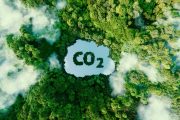A new scientific study of the Himalayan glaciers is raising fresh doubts about the troubled theory of manmade climate change, and could renew interest in a debacle that shook the Intergovernmental Panel on Climate Change (IPCC) several years ago.
When the “Climategate” scandal erupted in 2009, the global warming theory faced widespread ridicule. For certain segments of public opinion, the release of reams of incriminating emails between climate change scientists fundamentally undermined the credibility of the entire theory. As The New American reported in November 2009:
The messages were pirated from the Climatic Research Unit (CRU) of the University of East Anglia (UEA) and reveal correspondence between British and American researchers engaged in fraudulent reporting of data to favor their own climate change agenda. UEA officials confirmed one of their servers was hacked, and several of the scientists involved admitted the authenticity of the messages, according to the New York Times. The article opined, “The evidence pointing to a growing human contribution to global warming is so widely accepted that the hacked material is unlikely to erode the overall argument.”
Climatologist Patrick J. Michaels challenged that position. “This is not a smoking gun, this is a mushroom cloud.” The e-mails implicate scores of researchers, most of whom are associated with the UN’s Intergovernmental Panel on Climate Change (IPCC), an organization many skeptics believe was created exclusively to provide evidence of anthropogenic global warming (AGW).
The next month, in December 2009, the UN-sponsored Climate Change Conference in Copenhagen ended without implementing its intended agenda of global redistribution of wealth. The “Glaciergate” controversy which became public in January 2010 was part of the next round of revelations which called the scientific credibility of the IPCC into question. As reported for The New American at that time, the IPCC’s claim that the Himalayan glaciers were likely to melt away within decades seemed extreme even for those who subscribed to the climate change theory; the fact that the IPCC’s claim relied on one scientist, whose study of the Himalayan glaciers had not even undergone peer review, raised a scandal:
The Fourth Assessment Report (AR4) of the Intergovernmental Panel on Climate Change (IPCC) claimed that global warming would cause the massive Himalayan glaciers to shrink to extinction by 2035. As reported by The Australian, the IPCC cited campaign literature published by the World Wildlife Fund (WWF) in making the claim, even exaggerating that report to pin a high likelihood on the prediction.
The WWF gleaned its information from a 1999 article published in the journal New Scientist. The author, Fred Pearce, had quoted Indian scientist Syed Hasnain who was at the time chairman of the working group on Himalayan glaciology for the International Commission on Snow and Ice. Hasnain told Pearce he had data about a portion of the Himalayan glaciers he feared were at risk. Pearce told The Australian he eventually obtained a copy of Hasnain’s report, but it contained no specific date by which any melting was forecast to occur, nor had it been peer-reviewed or published in a scientific journal.
Hasnain now works for the head of the IPCC, Rajendra Pachauri, as head of the glaciology team for TERI, an energy research institute headquartered in India.
Pachauri’s career with the IPCC survived the calls for his resignation, but a new study further demonstrates how far removed the AR4 is from any realistic assessment of the Himalayan glaciers. Far from rapidly shrinking to the point of oblivion, many of the Himalayan glaciers are growing. An April 16 story for the Christian Science Monitor casts the new data in the light most favorable to the global warming theory, but the stubborn fact that the glaciers are growing refuses to disappear. Beginning with the usual appeal to the global warming dogma — “Glaciers and sea ice around the world are melting at unprecedented rates, but new data indicates that this phenomenon may be lopsided” — the Christian Science Monitor article still concedes:
It seems that some areas of the Himalayan mountain range are melting faster than others, which aren’t melting at all, a new study indicates.
Specifically, the Karakoram mountain range is holding steady, and may even be growing in size, the study, published in the April 2012 issue of the journal Nature Geoscience, suggests.
“The rest of the glaciers in the Himalayas are mostly melting, in that they have negative mass balance, here we found that glaciers aren’t,” study researcher Julie Gardelle, of CNRS-Université Grenoble, France, told LiveScience. “This is an anomalous behavior.”
The Karakoram mountain range spans the India-China-Pakistan border. It is home to the world’s second highest peak, K2, and has the highest concentration of peaks over 5 miles (8 kilometers) high in the world. It is home to about half of the volume of the Himalayan glaciers.
The researchers used satellite photos to analyze the extent of the ice in about a quarter of the total range — about 2,167 square miles (5,615 square kilometers). The photos were taken in 1999 and 2008. The researchers used two computer models to translate the images, revealing the elevation of the glaciers and estimating the extent of the ice.
They found that the glaciers are holding steady and based on the numbers might actually be gaining mass. But Gardelle warns this doesn’t mean global warming and glacier melt isn’t happening elsewhere.
One might reasonably question how “anomalous” an area of 2,167 square miles actual is — an area larger than the state of Rhode Island — given that the overall extent of the glaciers in the Karakoram range in the western Himalayas is 7,700 square miles. And appeals to what might be “happening elsewhere” does not detract from the fact that, for the IPCC, the supposedly catastrophic meltdown in the Himalayas was the big story:
“Glaciers in the Himalaya are receding faster than in any other part of the world and, if the present rate continues, the likelihood of them disappearing by the year 2035 and perhaps sooner is very high if the Earth keeps warming at the current rate,” according to a 2007 Intergovernmental Panel on Climate Change (IPCC) report.
Now, the area where glaciers were “receding faster than in any other part of the world,” is, in fact, seeing statistically significant growth in the size of the glaciers over a substantial portion of the area under study. In essence, at the very time when the IPCC was relying on WWF literature to substantiate its claims for the end of the Himalayan glaciers, satellite photos were being taken which would disprove the central claim of Pachauri’s IPCC regarding the fate of those glaciers. That the researcher responsible for the study is clearly not a “climate change denier” makes the IPCC’s credibility gap all the more significant, and it raises new questions regarding the fundamental credibility of any claim coming from an organization which has relied on shaky science to back its demand for the power to take $76 trillion from the economies of the industrialized world and “redistribute” those funds for “green technologies” in the third world.




